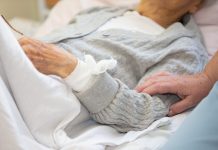Andrew Davies, Digital Health Lead at ABHI provides an important update on the latest developments in the medical technology sector
Advocating on behalf of the largest sector by employment within Life Sciences(1), HealthTech, the Association of British HealthTech Industries (ABHI) marked its 30th-anniversary last year. In that time, our industry has changed significantly, from being product-based to delivering value-based service solutions and increasingly incorporating new fields of science, utilising data, artificial intelligence (AI), robotics and nanomaterials.
We represent 300 member companies, and as their devices, diagnostics and digital technologies have become increasingly sophisticated, treatment for the likes of cancer and stroke is now quicker and more targeted, supporting improved survival rates and life expectancy.
Yet with the well understood demographic shifts(2) comes a rise in chronic conditions, often perpetuated by diet and lifestyle factors, with increased rates of diabetes and obesity(3), which are now the primary drivers of strain on over-stretched healthcare systems(4). We must now predict, identify, diagnose and treat patients in a holistic manner and as early as possible to prevent, manage or halt disease progression.
There will always be a role for the hospital, but with the right use of technology, we can start to look at delivering care in alternative environments, such as the home or workplace. Through monitoring and predictive algorithms, we are positioned to manage our own health, with added focus on prevention and protection, thus, alleviating pressures on health systems.
It’s not all apps, robots and telemedicine, though. There are currently over 11,0001 Digital Health employees working in the UK; applying their trade to infrastructure projects, such as hospital and GP information systems.
Programmes that will equip services, such as the UK’s NHS, to deliver on what is arguably its prize asset:(5) its data. As the world’s largest single health-payer system, the NHS has a rich data pool. Large datasets, utilised effectively, mean three things for care: it can be more predictable, more personalised and more precise.
This data pool gives us the opportunity to deliver against the four Vs of data(6) (Velocity, Volume, Veracity and Variety). However, this data pool cannot be constructed or utilised without the involvement and agreement of patients. Patient consent to data sharing must be the foundation for any revolution in digital health. We must engage citizens to have an informed public debate on the beneficial uses of health data. This is particularly the case when commercial entities form part of the data cycle. For this reason, ABHI is partnering with relevant organisations to ensure we support the debate on informed patient opt-in.
Research(7,8) suggests that the public does not, in principle, want their health records being shared with commercial organisations and so appropriate regulation around data security is essential. People must trust that their information is being used appropriately. This underpinning principle must be supported by a regulatory framework that encompasses product, service and data regulation. Data protection legislation provides the framework for sharing of data and further guidance has been provided in the code of conduct for HealthTech(9) from the Department of Health and Social Care. Cloud-based services can help overcome this by providing a route to share anonymised data with entities outside of the consented area. Blockchain/distributed ledgers also have great potential to support sharing of health data, both at an organisational level, but potentially in the future as a basis for personal control of data. And so, whilst GDPR has enshrined the basics of data regulation into law, the sensitivity of health data and its sharing with industry may need further governance to build the trust and reassurance with the public.
Given the complexity of the digital landscape, collaboration is crucial. Developers, researchers, clinicians, users and funders all have a role to play. However, a great idea will remain an idea, if it is not given the necessary support needed to scale through access to capital and the right support to navigate and implement within health systems.
The UK invests heavily in research, and rightly so, however, there is much less emphasis on implementation and adoption. ABHI are working to develop networks that promote communication and innovation with a strong direction towards implementation.
There is a role for companies, regulators, patients and providers to come together and design a system of transparency and privacy, that works for everyone. The prospect that digital technologies will make our health system more convenient, more coordinated, and more responsive to consumers’ needs is enticing. The opportunity for population health management with a focus on healthy living is even more exciting, with a focus on engaged citizens preventing chronic disease and self-managing conditions.
(2) https://www.kingsfund.org.uk/projects/time-think-differently/trends-demography
(3) https://www.diabetes.co.uk/diabetes-and-obesity.html
(5) https://www.digitalhealth.net/2019/07/nhs-data-worth-9-6bn-per-year-says-ernst-young/
(6) https://www.ibmbigdatahub.com/infographic/four-vs-big-data
(7) https://www.ipsos.com/ipsos-mori/en-uk/commercial-access-health-data
(9) Code of conduct for data-driven health and care technology; Department of Health & Social Care; https://www.gov.uk/government/publications/code-of-conduct-for-data-driven-health-and-care-technology/initial-code-of-conduct-for-data-driven-health-and-care-technology











